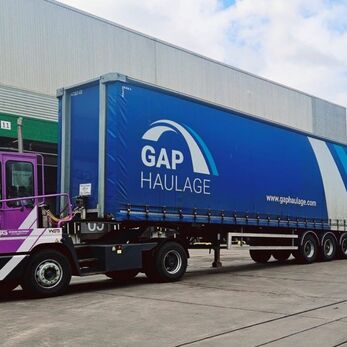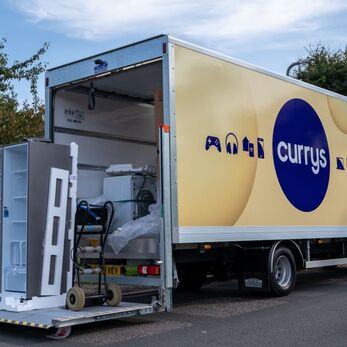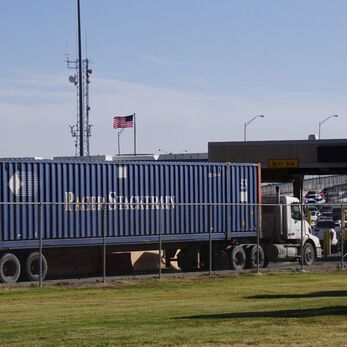Scotland’s truck stops, fleet depots, lorry parks and ports can help road freight operators switch to all-electric fleets by installing vehicle charging points, new research from Heriot-Watt University suggests.
In its report, ‘Towards Zero Emission HGV Infrastructure in Scotland‘, the university’s Centre for Sustainable Road Freight identifies a need for charging points for battery-operated electric heavy-goods vehicles (HGV) both at fleet depots and along major freight routes including the A9, A90 and M74. Hydrogen trucks installed with fuel-cells would also need charging points along these routes.
Transport Scotland, Scotland’s national transport agency, commissioned the report as part of its commitment to the ‘HGV Decarbonisation Pathway for Scotland‘, a plan to help the HGV industry in Scotland transition to zero-emission trucks.
Professor Phil Greening, a logistics expert at Heriot-Watt University and director of the Centre for Sustainable Road Freight, said: “Electric trucks are already on our roads and most short haul freight deliveries can already be completed without any extra charging stops.
“But for all current freight routes in Scotland to be completed, charging points for electric HGVs need to be provided both at depots and along freight routes, particularly the most heavily used ones.”
The A9 between Stirling and Inverness, the A90 between Perth and Aberdeen and the M74 between Glasgow and Carlisle are “critical corridors for freight”, say the researchers, who have identified ‘hot spot’ locations for electric truck charging points along these routes.
These include Dalwhinnie in the Scottish Highlands, Ballinluig in Perth and Kinross, Stracathro in Angus, Abington in South Lanarkshire and Annandale Water in Dumfries and Galloway.
Where possible, charging points would be positioned at existing locations such as truck stops, lorry parks, ports and transport hubs such as container storage terminals, the report notes.
Land in or next to these charger locations, for example ports, would also be needed to install rapid chargers and provide space for HGVs to park and charge.
READ MORE: Government responds to House of Lords electric vehicle inquiry
Electrical substations – that regulate the distribution of electricity – would likely need to be upgraded in a number of areas to cope with increased vehicle charging, including at peak periods.
“Critical” substation locations include Milnathort in Perth and Kinross, Inchbare in Angus, Symington in South Lanarkshire, Kirkwall in Orkney and Ullapool in the Highlands.
The researchers modelled the same routes as if all freight fleets were running on hydrogen, a type of gas that is used to make zero-emission fuel.
Although hydrogen is more expensive than electricity stored in batteries, the computer modelling showed that hydrogen refuelling stations would be used heavily along the A90 between Perth and Aberdeen and the M74 between Glasgow and Carlisle.
There was also potential for hydrogen refuelling stations in the central belt, but to a lesser extent, the researchers found.
Along the A9, lighter usage is predicted, probably because of where the freight fleets in the sample data are based.
Key locations for hydrogen refuelling stations include Dalwhinnie, Annandale Water, Kinross in Perth and Kinross and Clydebank in West Dunbartonshire.
For more information about how hydrogen is being used as a fuel in the logistics sector, check out this feature from the issue of Logistics Manager!
Computer modelling and ‘advanced analytics’ using real-world data from 80,000 truck journeys in Scotland was used to carry out the research.
The project was delivered using an in-house modelling and simulation suite developed by the Centre for Sustainable Road Freight at Heriot-Watt University.
The centre is a collaboration between Heriot-Watt, Cambridge University, Westminster University and the freight industry.
More journey data is needed from HGV fleets to continue building this picture of freight charging needs in Scotland and the researchers are inviting operators to provide this.
Further investigation is also needed of remote areas with fewer existing facilities such as service stations and truck stops where charging points could be installed. These were identified on the A9 north of Invergordon and in Shetland.
Stakeholders in the research also suggest the A82 and A83 in Argyll and Bute, which are “important freight routes for timber, aquaculture and access to the Western Isles”.
The A77 to Cairnryan in Stranraer is another remote area where “potential gaps in charging infrastructure require further modelling,” the researchers say. Transport by ferry to the Scottish islands also needs to be accounted for in modelling.
The researchers hope to publish an updated report in 2025 and say once more data becomes available, these situations will be further investigated.
The Centre for Sustainable Road Freight said the project provided a blueprint for using data to assess critical charging and refuelling locations for zero-emission HGVs across Scotland.









